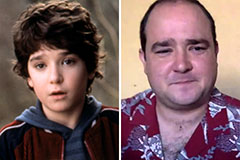
Recognizing Your Laundry Device
Laundry home appliances are intricate equipments, made with a range of setups to efficiently tidy and look after various material kinds. The standard anatomy of these gadgets consists of a drum for holding garments, an agitator or impeller to help remove dust, a water pump for washing, and a motor for rotating and drying out. Comprehending these fundamental elements and their features can dramatically enhance the operation and longevity of your laundry home appliance.
In addition to these essential elements, washing appliances are equipped with a selection of sensing units and control board. These technology-based attributes lead the device's operation, dictating aspects such as load size, water temperature, and cycle size. Recognizing the objective and functionality of these controls is vital-- not just for getting the very best performance out of your maker, however likewise for accurately identifying any troubles that may occur. This expertise permits customers to fix effectively, saving them time and potentially expensive expert repair work costs.
Detecting Typical Problems with Your Home appliance
Recognizing the origin of a breakdown in your laundry home appliance is the very first step in the direction of an effective option. A great location to begin is the individual handbook that includes your maker; it generally gives a list of common problems, potential causes and recommended remedies. Don't overlook the basic options: make sure the machine is plugged in and that the circuit breaker hasn't tripped, constantly a prudent first strategy before diving right into much more complex diagnostic treatments.
It's likewise beneficial to familiarize on your own with the core parts and functions of your device. Standard knowledge about the water valve, drain pump, agitator, belt, and electric motor can immensely aid in identifying the issue. Additionally, observing any kind of noticeable changes in the device's behavior such as unusual noises, vibrations, or performance irregularities will offer important hints regarding what might have failed. For this reason, an eager feeling of monitoring integrated with a fundamental understanding of the home appliance might supply the initial medical diagnosis required before turning to expert assistance.
Dealing with Problems of Water Loading
The common resource of water filling problems in washing devices is often linked to a breakdown in the water inlet shutoff or the pressure switch. The shutoff controls the water flow right into the appliance, and the pressure button signals when the wanted water level is reached. When the shutoff is damaged or the pressure switch is not working properly, it can cause inaccurate water levels, triggering either excessive or inadequate water to load the machine.
One technique of fixing entails by hand filling up the equipment with water. If the machine operates generally when by hand filled, the issue likely lies within the water inlet valve. Additionally, if an extreme quantity of water enters the device in spite of getting to the established degree, the pressure switch is most likely the offender. It is important for house owners to follow the particular directions and security preventative measures provided by the manufacturer when testing these elements, or consider employing the aid of an expert.
Taking Care Of Water Drainage Disruptions
Water drainage disturbances in a washing device frequently materialize as water constantly staying in the appliance after completion of a cycle. This issue can stem from different aspects, consisting of a clogged up or pinch-bent drainpipe pipe, or a malfunctioning drainpipe pump. An understanding of the normal perpetrators can verify vital in detecting the source of the issue and crafting an efficient service. In severe cases, where water presence falls short to decline article several rinses, instant attention is paramount to avoid prospective water damage or mold growth.
Carrying out a systematic strategy to deal with drainage disruptions can create effective outcomes. Beginning with a visual examination of the drainpipe hose pipe can help determine prospective blockages or physical damage. If straightening out a curved tube or eliminating a blockage does not settle the problem, it might be essential to consider a malfunctioning drain pump, which may need specialist repair or replacement. Furthermore, very carefully observing any kind of mistake codes displayed on the appliance's console during the cycle can use beneficial details about the source of the disruption. Consulting the appliance manual can aid decipher these error messages, further assisting in identifying the precise problem.
Taking Care Of Issues with Drum Rotation
Experiencing a drum that won't rotate is a regular issue that can occur with your washing machine. This concern commonly shows a mechanical problem, typically related to the motor, belts, or cover button. The motor is accountable for driving the spinning activity in your washing machine, so if it's damaged or faulty, the drum will certainly not turn. Also, dysfunctional belts or cover buttons can likewise impede the drum's activity.
Establishing the source of a non-spinning concern can be an overwhelming task, yet it's a crucial step in fixing the issue effectively. To begin, inspect the cover button for any type of indications of damages or wear. You can rapidly verify if the cover button is the offender by listening for an unique clicking sound when opening up and closing the cover. If the audio is absent, replacing the cover button may be necessary. Sometimes, busted belts or burnt out electric motors might need a much more thorough examination by a professional. Keep in mind, safety and security should always be your top priority when dealing with electric or mechanical components, so ensure the washing machine is unplugged prior to checking any kind of components.
Fixing Incomplete Cycle Troubles
Often, the deal with laundry home appliances isn't restricted to simply water filling out or draining pipes out, however it goes beyond to more complex problems like insufficient cycles. This occurs when the laundry device quits arbitrarily at any kind of factor during its clean, rinse or spin cycles. This aggravating hiccup can be a result of a range of aspects from a damaged timer or control panel to cover switches over not operating properly. Additionally, if the appliance's motor is overheating or the water level switch is malfunctioning, these can also contribute to the disruption of the device's normal cycle.
Resolving this trouble needs a mindful analysis process to determine the root of the concern. Begin by performing a basic examination of the cover switch, as damage gradually might trigger it to quit functioning correctly. Moving along, evaluate the water level button; if it is defective, it might send wrong signals to the equipment concerning when to start and stop. You might likewise want to examine the home appliance's control board and timer. If they are faulty, the equipment might either stop mid-cycle or otherwise begin whatsoever. Please bear in mind that this kind of repairing ought to be carried out with care as power is included, and if you are unsure concerning any kind of step of the procedure, it is suggested you seek advice from an experienced specialist.
Resolving Too Much Noise and Vibration Concerns
Extreme sound and resonance from your laundry home appliance can show several prospective problems, varying from an unbalanced tons to a malfunctioning element within the equipment. Frequently triggered by irregular circulation of clothes, vibrations can be quickly dealt with by pausing the cycle and redistributing the tons within the drum. Nevertheless, if the sound and vibration linger, it could be due to broken or loosened drive belts, drum bearings, or motor.
To properly diagnose the trouble, it may be necessary to aesthetically examine the parts concerned for any type of signs of wear or damages and change any defective elements in a timely fashion. If your home appliance continues to make loud noises in spite of your attempts to rearrange the load, it's extremely recommended that you get in touch with an expert. A skilled professional will have the capacity to determine and repair the source of the issue, guaranteeing your machine runs quietly and successfully. It's vital to address these troubles quickly, as long term vibrations or sounds might trigger more damages to your appliance or bordering area.
Taking Care Of Temperature Level Control Issues
Wrong temperature level law in washing devices can cause substantial disturbances. This problem usually develops when the thermostat or burner of the home appliance experiences technical problems. The thermostat supervises of handling the water temperature level, while the heating element is accountable for heating up the water to the suitable level for each cycle. Nonetheless, also a small breakdown, triggered by elements such as aging components, faulty connections, or a malfunctioning control board, can restrain the reliable performance of your maker.
To resolve this, it's crucial to start with basic troubleshooting. Start with assessing the washing machine's temperature setting. It needs to represent the care labels on your washing-- expensive or as well low a temperature can harm materials and impact the overall washing efficacy. If the setups remain in order but the temperature level appears inaccurate, expert support may be required. Educated professionals can embark on the required evaluations of the burner and thermostat, accomplish requisite repairs, or suggest substitute parts as required. It's very suggested not to attempt any inner repair services without professional guidance as it Laundry Aplliance Repair may lead to unsafe scenarios and likewise void any type of existing warranties.

 Bradley Pierce Then & Now!
Bradley Pierce Then & Now! Josh Saviano Then & Now!
Josh Saviano Then & Now! Tatyana Ali Then & Now!
Tatyana Ali Then & Now! Charlie Korsmo Then & Now!
Charlie Korsmo Then & Now! Sarah Michelle Gellar Then & Now!
Sarah Michelle Gellar Then & Now!